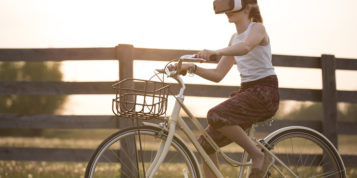Google’s much-anticipated augmented reality feature is now available to selected users.
The feature, which was announced last May at its yearly I/O developer conference, is known as the AR Visual Positioning System. It uses a layer of augmented reality over the live view seen through a phone camera to provide navigation. Users simply lift their phone up in front of their eyes, and arrows will appear over the streets indicating which way to go to reach their destination.
The feature will soon be rolled out to selected Local Guides, but it could be some time before it is released to the general public.
This new feature is reportedly similar to what Google hoped to offer with Google Glass – minus the headset. One user who got to try the feature on an Android device, David Pierce of the Wall Street Journal, said the camera recognised landmarks and determined his position with what he termed “remarkable precision”, although he cautioned that it’s not good for driving. He also said that “it’s a huge step in the right direction for Google Maps.”
The app picks up your location using GPS, then enlists the help of Street View to narrow down your precise location. After pinning down where you are, big three-dimensional arrows and directions are displayed on the screen.
Google is still experimenting with the user interface, and Pierce reported that the one he saw in his preview could change before it is launched at scale. For example, Google has found that users follow lines on the ground too closely and that animated guides keep them glued to their screen, and further adjustments could be in the works.
This offering preserves battery life by darkening the screen when it’s held in front of a user’s face for too long, and it switches back to the traditional map view when it is set sown. Google says it’s not intended to serve as a primary navigation tool. Instead, it’s made with complicated intersections and scenarios in mind, such as pinning down the location of a hidden alley or determining which way to head when steeping off the subway.
They are discouraging people from relying on it too heavily, partly out of concern for safety – for example, users who are too focused on their screen could bump into others or get mugged.
This app and similar offerings, like the Hot Stepper app, will be well-suited to the augmented reality glasses that many tech companies are currently working on.


